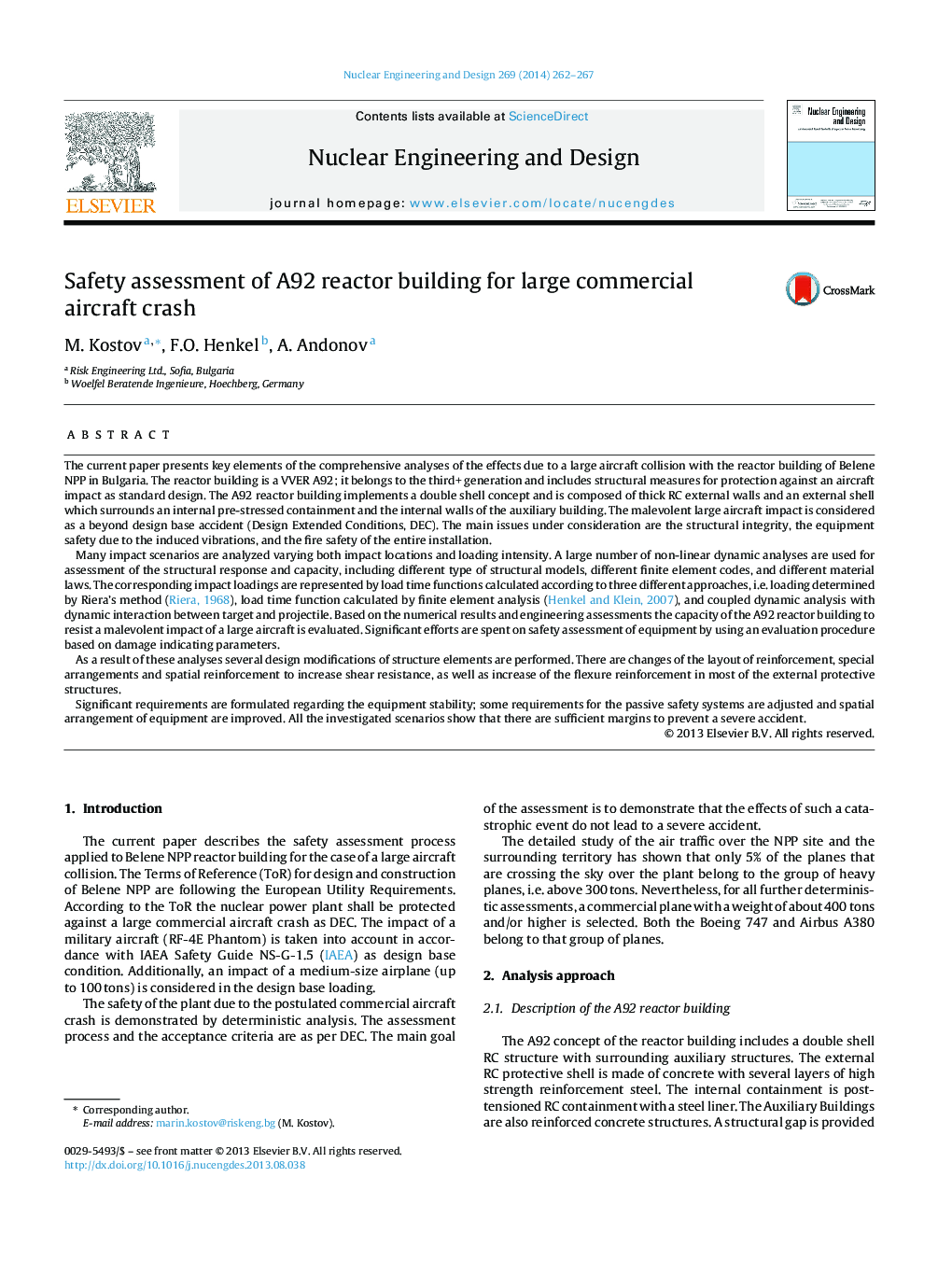| Article ID | Journal | Published Year | Pages | File Type |
|---|---|---|---|---|
| 296622 | Nuclear Engineering and Design | 2014 | 6 Pages |
The current paper presents key elements of the comprehensive analyses of the effects due to a large aircraft collision with the reactor building of Belene NPP in Bulgaria. The reactor building is a VVER A92; it belongs to the third+ generation and includes structural measures for protection against an aircraft impact as standard design. The A92 reactor building implements a double shell concept and is composed of thick RC external walls and an external shell which surrounds an internal pre-stressed containment and the internal walls of the auxiliary building. The malevolent large aircraft impact is considered as a beyond design base accident (Design Extended Conditions, DEC). The main issues under consideration are the structural integrity, the equipment safety due to the induced vibrations, and the fire safety of the entire installation.Many impact scenarios are analyzed varying both impact locations and loading intensity. A large number of non-linear dynamic analyses are used for assessment of the structural response and capacity, including different type of structural models, different finite element codes, and different material laws. The corresponding impact loadings are represented by load time functions calculated according to three different approaches, i.e. loading determined by Riera's method (Riera, 1968), load time function calculated by finite element analysis (Henkel and Klein, 2007), and coupled dynamic analysis with dynamic interaction between target and projectile. Based on the numerical results and engineering assessments the capacity of the A92 reactor building to resist a malevolent impact of a large aircraft is evaluated. Significant efforts are spent on safety assessment of equipment by using an evaluation procedure based on damage indicating parameters.As a result of these analyses several design modifications of structure elements are performed. There are changes of the layout of reinforcement, special arrangements and spatial reinforcement to increase shear resistance, as well as increase of the flexure reinforcement in most of the external protective structures.Significant requirements are formulated regarding the equipment stability; some requirements for the passive safety systems are adjusted and spatial arrangement of equipment are improved. All the investigated scenarios show that there are sufficient margins to prevent a severe accident.
